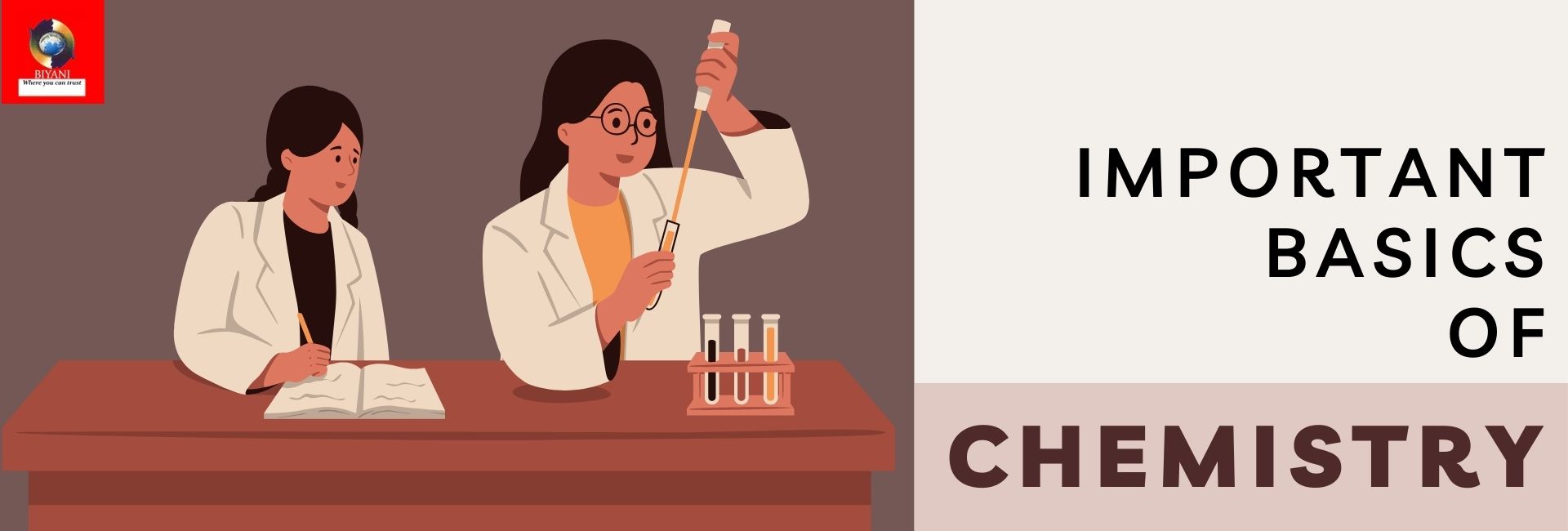Introduction
Hello there, I hope you’re doing well. Basically, Chemistry is a vast subject. But, it is necessary for everyone to learn the important basics of chemistry. As your knowledge is incomplete without the basics. Keep reading till the end of the blog for all the important basics.
Chemistry is the study of the composition, structure, properties, and change of matter [matter is defined as anything that has rest mass and volume (it takes up space) and is made up of particles]. Chemistry is chiefly concerned with atoms (a basic unit in chemistry) and their interactions with other atoms.
Important Basics of Chemistry
Atoms
An atom is a basic unit of matter that consists of a central nucleus surrounded by negatively charged electrons. The nucleus contains protons and neutrons. Electrons revolve around the nucleus in different orbits.
An atom is the smallest indivisible particle of an element that retains its chemical properties.
Molecules
Molecules are made of atoms of one or more elements. Some molecules are made only by one type of atom (two oxygen atoms bond together to form an O2 molecule) while molecules like protein are made up of atoms from different elements.
A molecule is a chemical combination of two or more atoms in a definite arrangement held together by various types of chemical bonds.
Elements
An element is a that cannot be reduced or changed into other chemical substances by ordinary chemical means. All elements are presented in an organized manner in a periodic table. All matter consists of combinations of these elements. As of 2008, 117 unique elements have been discovered or artificially created..
Consequently, a chemical element is a pure chemical substance consisting of one type of atom distinguished by its atomic number. Hence, Carbon, Oxygen, Silicon, Arsenic, Aluminium, Iron, Copper, Gold, Mercury, etc. are all chemical elements.
Hydrogen and Helium are the most abundant elements in the universe.
Iron is the most abundant element (by mass) on the earth.
Oxygen is the most common element in the earth’s crust.
Characteristics:
Generally, an element consists of only one kind of atom.
Moreover, it cannot be broken down into a simpler type of matter by either physical or chemical means.
It can exist as either atoms (e.g. argon) or molecules (e.g., nitrogen).
- Natural elements
The elements which occur naturally on earth are called natural elements.
Ex: Oxygen, Nitrogen, Carbon etc.
- Synthetic or man-made elements
A synthetic element is a chemical element that does not occur naturally on the earth. These are prepared artificially and are unstable. The first synthetic element made was Technetium.
You are reading ‘important basics of chemistry’
Compounds
Compound: When two or more atoms combine through a chemical reaction in a fixed ratio, a compound is formed. For example, sugar, glass, salt, soap, etc.
Compounds contain more than one kind of atom (more on atoms, later). Evidently, it cannot be separated into constituent atoms by simple methods.
Eg: Common salt(NaCl), Sodium carbonate (Na2CO3).
Characteristics:
- It consists of atoms of two or more different elements bound together,
- Likewise, We can break down compounds into a simpler type of matter (elements) by chemical means (but not by physical means),
- It has properties that are different from its component elements, and
- Generally, it always contains the same ratio of its component atoms.
Significantly, we can express the ratio of each element by a chemical formula. For example, a molecule of carbon dioxide (CO2) is a compound consisting of two oxygen atoms bonded to a single carbon atom.
Mixtures
Mixtures are a combination of two or more substances, which when combined, each substance retain their own chemical identity. Examples of Mixtures include :
- sand and water.
- salt and water.
- sugar and salt.
Characteristics:
- It consists of two or more different elements and/or compounds physically intermingled.
- Identically, we can separate it into its components by physical means.
- often retains many of the properties of its components.
- Some mixtures such as sand, rocks, and wood do not have the same composition, properties, and appearance throughout the mixture and are referred to as heterogeneous mixtures.
- On the other hand, Mixtures that are uniform throughout are called homogeneous mixtures. Air is a homogeneous mixture made up of the gaseous substances nitrogen, oxygen, carbon dioxide, and smaller amounts of other substances.
- Furthermore, Homogeneous mixtures are also called solutions. Salt and sugar can dissolve in water to form a solution. Air is a gaseous solution; gasoline is a liquid solution; brass is a solid solution.
Blog by: Dr. Mukta Jain
Department of Science
Biyani Group of Colleges, Jaipur
CLICK HERE
to pursue your Graduation by sitting at your home.

